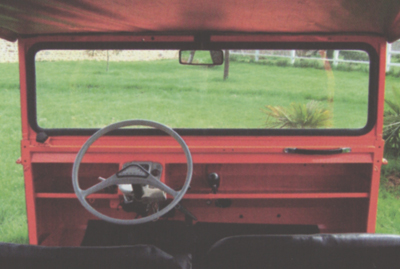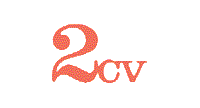|
Originally
conceived in 1963 by two Frenchmen, Mr. Letoquin and Mr. Lechanteur,who
were the owners of les Ateliers et Forges de l’Ebrié, a company in
Abidjan in the Côte d'Ivoire (Ivory Coast), the Baby Brousse was
originally based on the Ami 6 chassis and mechanical components but
with a pressed steel body that required no welding.
|
 |
|
Above and right -
Côte d'Ivoirienne Baby Brousse
Below - interior of Côte d'Ivoirienne Baby
Brousse showing 2CV instrument panel
|
 |
|
Meanwhile,
in what was then South Vietnam, SAEO (the Vietnamese subsidiary of
Citroën), decided in 1969 in view of the success of the 2CV vans that
had been imported, to build a vehicle equipped with a rolled steel
body, using the 2CV chassis and engine. The Dalat was very similar in conception
to the Baby Brousse and can be recognised by its square grille and
Dyane headlights.
|
 |
|
Above - Côte
d'Ivoirienne Baby Brousse
|
|
In 1973 Citroën brought three Dalat
bodies to France from Vietnam and analysed the design. From these
studies they designed a vehicle whose simple manufacture can be carried
out without requiring heavy investments in pressing tools and used the
Baby Brousse name originally used in Côte d'Ivoire.
|
|
 |
|
Above - Côte
d'Ivoirienne Baby Brousse
|
|
It can thus be seen as a sort of metal-bodied Méhari.
Some 800 vehicles were produced "unofficially" while negotiations
continued with Citroën to put things on a more formal basis. In 1969,
Citroën bought the licence to build the Baby Brousse from Ateliers et
Forges de l’Ebrié.
|
 |
|
Below - Côte
d'Ivoirienne Baby Brousse
|
 |
|
The Baby Brousse was based on the mechanical
underpinnings of the 2CV Fourgonnette
and it was intended that the mechanical components would be exported
from France as CKD (Completely Knocked Down) kits for assembly in
countries without the industrial infrastructure to build automobiles.
It was thus quite similar in conception to the FAF.
The bodywork was made of pressed steel, required no
welding and was bolted to the chassis.
|
|
|
The Baby Brousse and vehicles similar to it were built in a
number of countries including:
-
Côte d'Ivoire (Ivory Coast) from 1963 to 1979 where it was
called Baby Brousse - 31,305 examples;
-
Vietnam from 1969 to 1975 where it was called Dalat - more than
5,000 examples;
-
Iran from 1970 to 1979 where it was called Mehari;
-
Sénégal from 1979 to 1983 where it was called Méhari;
-
Chile from 1972 to 1976 where it was called Yagán -
651 examples
-
Greece where it was called Pony.
Namco, the Greek Citroën concessionaire built the Pony in a factory
constructed specifically for the purpose in Thessalonika and used the
mechanical components of the Dyane 6 and was better built and equipped
than the others and a wider range was marketed - 17,000 examples.
-
It is believed that in addition to the FAF, a number of Baby
Brousses were built in Guinée Bissau but it has not been possible to
substantiate this.
|











